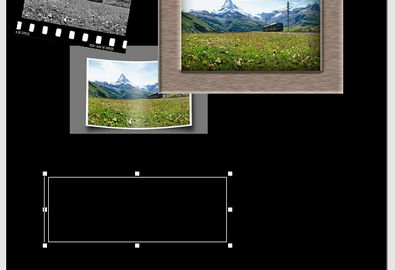About master names and objects automatic color
Since the version 2.0.2045, when creating rules and boxes on a page, weight, color and dash can be tied to a master and automatically applied on the page. This helps to put objects in an appropriate color over pages with background different than white.
On the following screenshot of a page with a black master, the rules and boxes automatically attain the white color.
This functionality is based on a special codified string you can add to the master name. If the master name doesn't contain such codified string, the default weight, color and dash will be applied, as before, from the personal preferences, if set, as explained in Set default colors and weights for fill and stroke.
How you should specify the name of the master?
Add, to the usual name of the master, a codified string in the following format:
^border_weight/border_color, border_tint/border_dashid
In the above example, the name of the master was event left, and then we added to it
^1000/[Paper],100/2
so the new master name became:
event left ^1000/[Paper],100/2
where the items are:
| event left | The name of the master |
| ^ | The marker of the presence of the codified string in the name. This character is reserved and you should not put it in a master name except to precede the codified string. If you put the marker in the name, then all text that follows it must be in the format as explained here, otherwise an error will happen on each creation of rules and boxes. |
| 1000 | The weight of the border, expressed in millipoints. |
| [Paper] | The name of the default color for borders. Such color must exist in the list of colors for the given title. |
| 100 | The shade of the default color for borders, in percentage. 100 means 100%. |
| 2 | The border dash id. At the moment, the only way to know the IDs of dashes is to export them as XML. |
Technical note
The changes for the previously explained functionality are in the SysApplyDefaults scripts in Page.vb.

